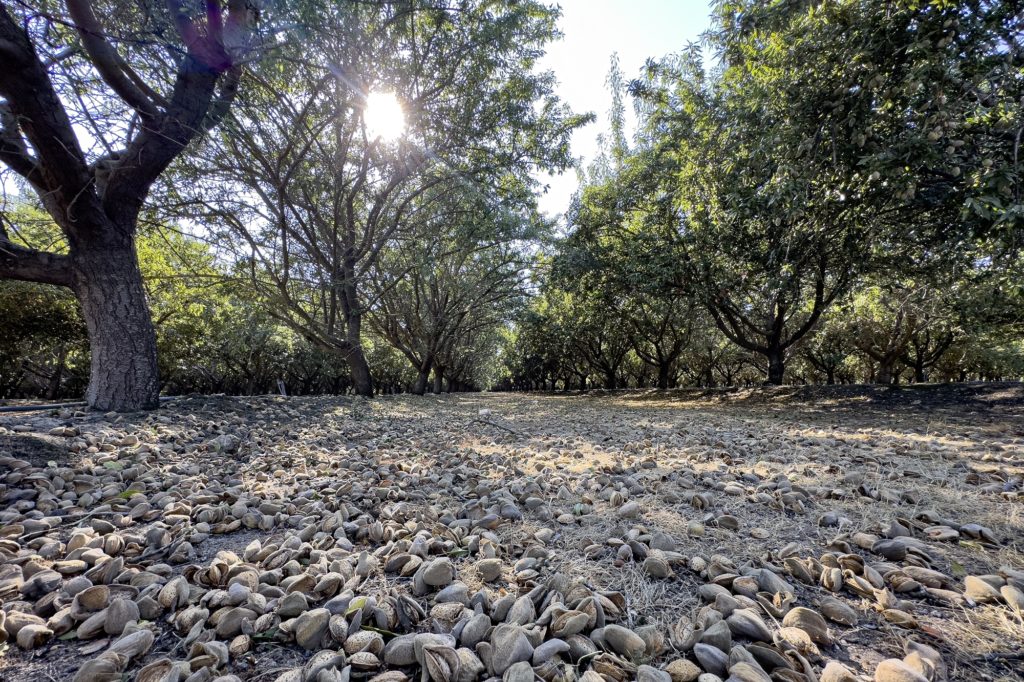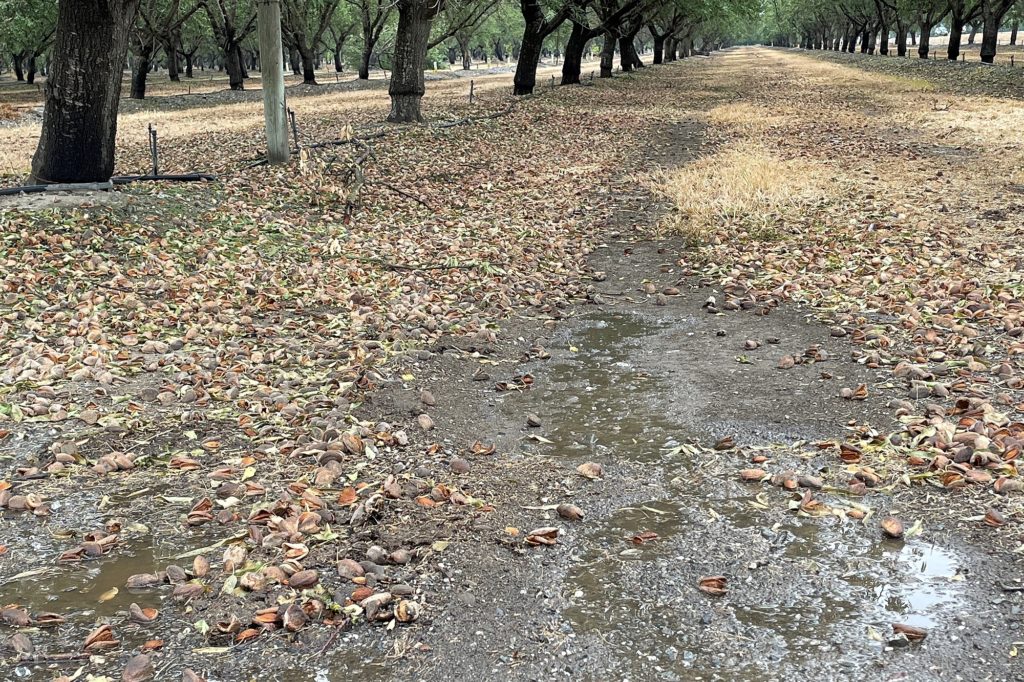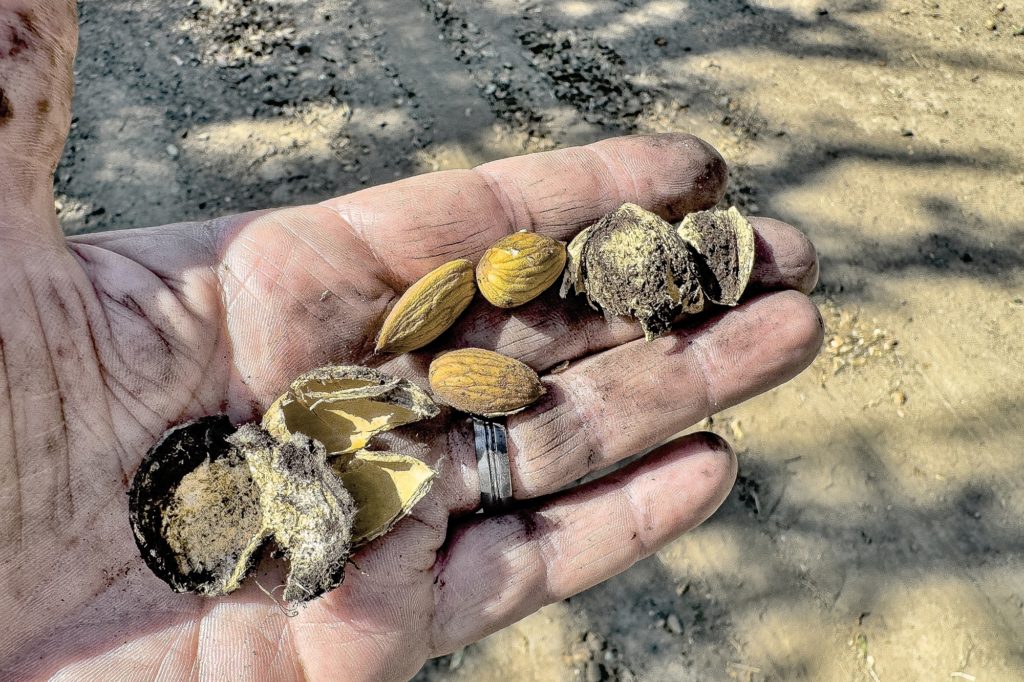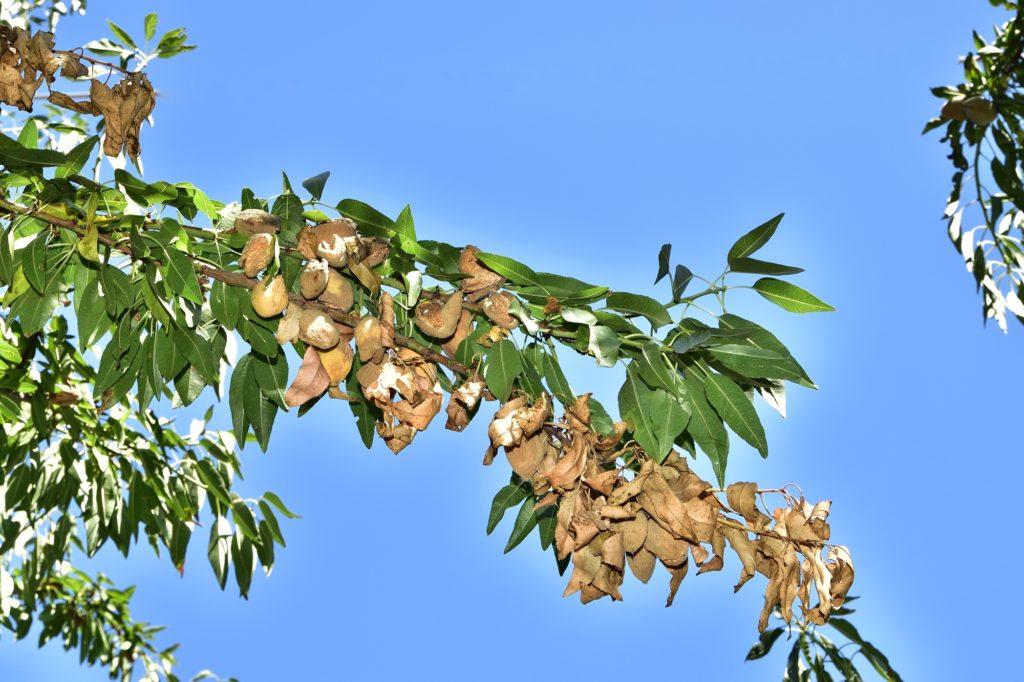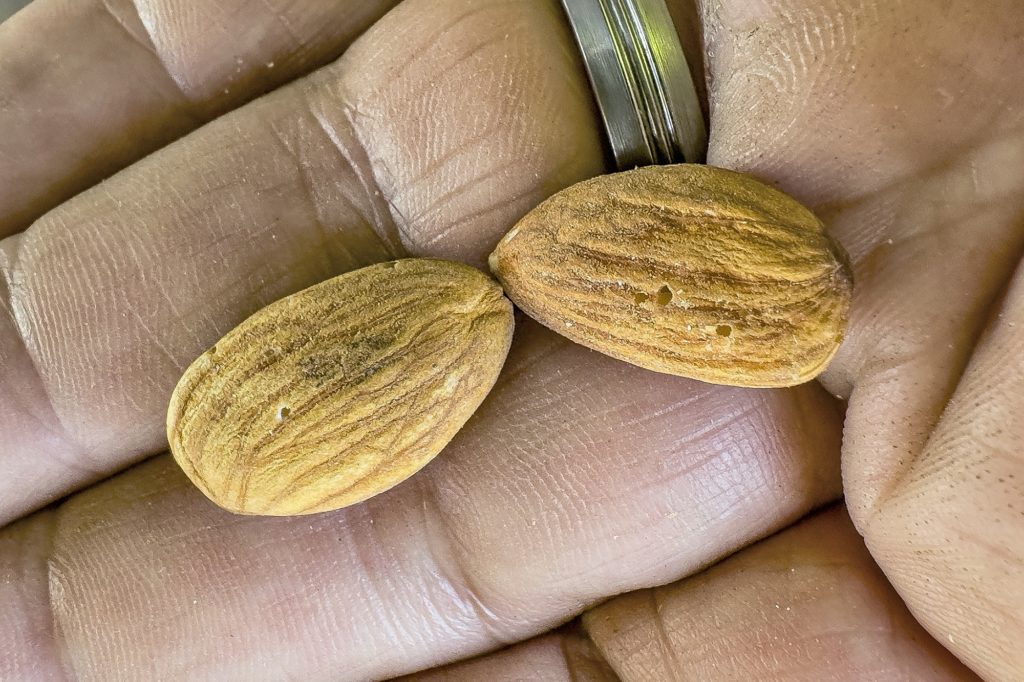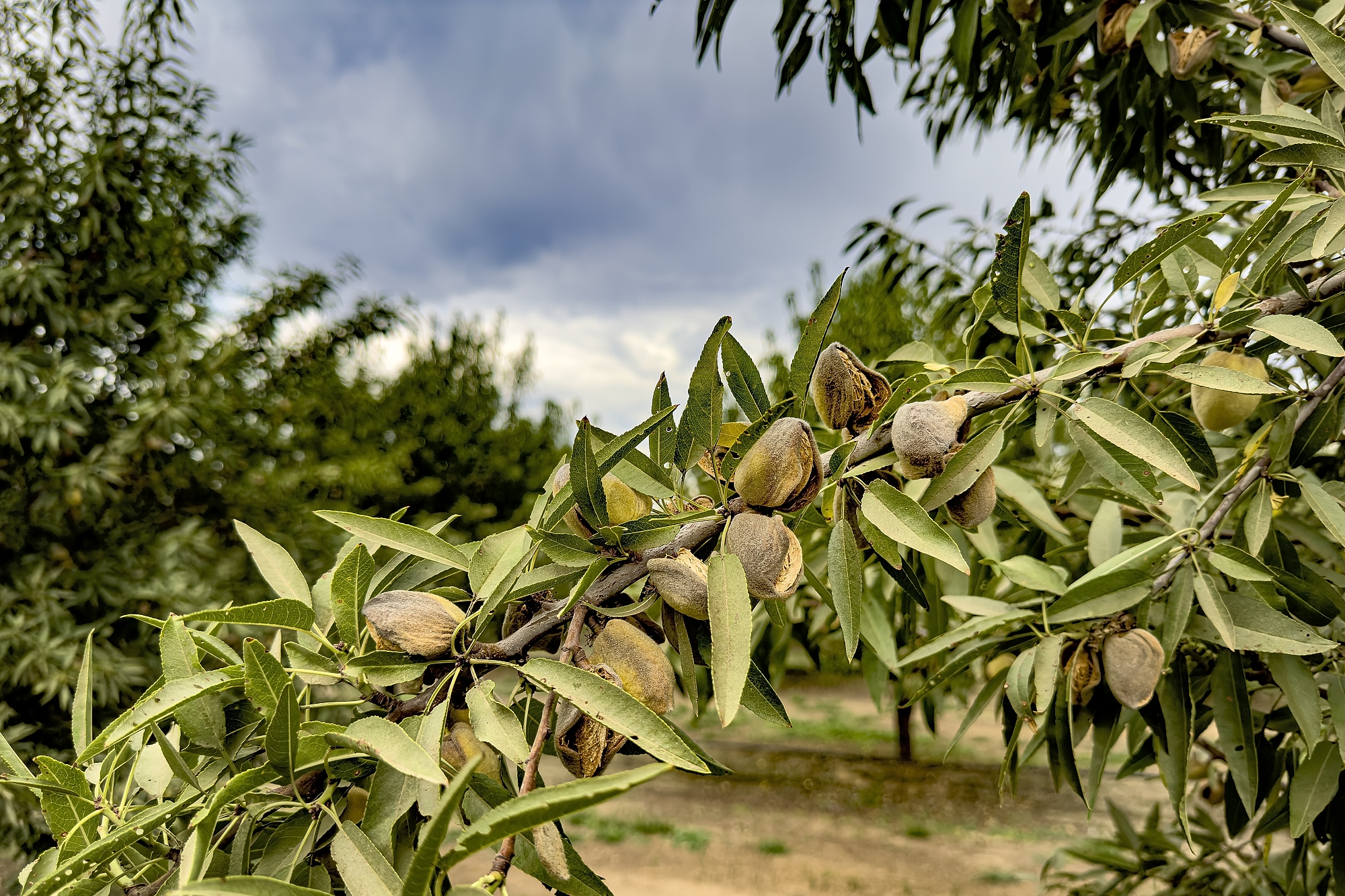
This report covers conditions and observations made between Monday, July 31, and Sunday August 27, 2023. The next scheduled report will be posted on Monday, October 2, 2023. In the event of any significant occurrences prior to that date, this site will be updated as soon as possible.
Harvest. Hurricane. Two events that should definitely NOT be combined. While growers continued to deal with comparatively warm to hot daily maximum temperatures during much of August, the biggest weather event of the month was the passage of the remnants of Hurricane Hilary between August 19th and 21st just as harvest operations were getting underway.
While all growing regions have been affected by the humid conditions that preceded and followed the storm’s passage, greatest impacts have been from the rainfall that spread over much of the southern San Joaquin Valley. Areas of Kern, Kings, Tulare, and Fresno counties received from 1 to 3 inches of rainfall from thunderstorms that preceded the primary storm’s passage on Saturday, August 19th and again on Monday, the 21st from the “main event” as Hilary’s remnants flowed over the state. Winds in excess of 30 mph also knocked nuts to the ground. Other areas of the central and northern San Joaquin Valley reported receiving from trace amounts to one-half inch of rain, while precipitation totals in the Sacramento Valley were reported at or below one-quarter inch.
Growers have been anxiously anticipating the start of the 2023 harvest. As noted in our previous report, the high temperatures that dominated much of July increased stress levels within the trees, prolonging an already late hull split. Growers and observers are reporting a wide range of maturity within the orchards, and even within single trees. Comparatively high humidity levels in advance of the storms have promoted fungal growth on the opening hulls, and excessive humidity after the storms have exacerbated an already dire situation in orchards that received the most rainfall with crop on the ground.
Growers are facing several significant issues this year:
- Those who received the greatest amount of rainfall are facing significant amounts of mold growing on the hull and shell of crop laying on the ground. As may be seen in the photos accompanying this report, fungal mycelium covering the shell can render the crop unusable as inshell product. Growers who received the most rainfall have swept and, or, conditioned their crops three to five times in an effort to dry the crop enough to pick up.
- Field staff inspecting crop for quality have noted excessive reject levels attributable to Navel Orange Worm (NOW). Huller-sheller operators that have received crop from the orchards have confirmed the damage, with levels running well into double-digit percentages for many loads.
- While the start of the harvest has been quite delayed, observers are reporting hull split in the later maturing pollinator varieties is progressing normally, indicating the potential for a compressed harvest and increased possibility of varieties being combined during the harvest. Some growers have predicted that they may have to send shakers into the orchards as soon as the Nonpareil has been picked up, with no time to irrigate between varieties.
Aside from the issues with moldy hulls and the impacts on producing inshell, the grower’s greatest challenges lie with NOW damage. Several factors are at play:
- Poor orchard sanitation during the past winter due to the near continuous winter rainfall resulting in high mummy loads and high populations of NOW surviving to infest the crop.
- The prolonged hull split, making proper timing of treatments to control NOW populations much more difficult. Observers have noted that some nuts within trees are ready to shake while others are just beginning to split.
- The number of abandoned orchards present throughout the Valley. Orchard removal companies have been unable to keep up with the volume of orchards scheduled for removal. Given that these plantings are not being farmed, NOW numbers have increased within these orchards and the NOW moths, being strong fliers are spreading to the surrounding landscape.
The factors listed above have combined to produce a very high reject levels and significant financial losses in much of the crop harvested thus far. At this time, the risk of damage to the balance of the crop remains high.
As this report is being written, shakers have begun to move into orchards throughout the Central Valley. Harvest operations will enter a “full throttle” pace during the first days of September as growers work to shake, sweep, and pick up the early harvesting varieties. Harvested product will quickly move to huller-sheller operations or storage in stockpiles for later processing as growers return to the field to harvest their pollinator varieties. All are hoping that there will no more challenges from the weather until harvest operations have been completed.
By Mel Machado, Vice President of Member Relations
Photos By: Christine Ivory, John Aja, Ben Goudie, and Mel Machado



